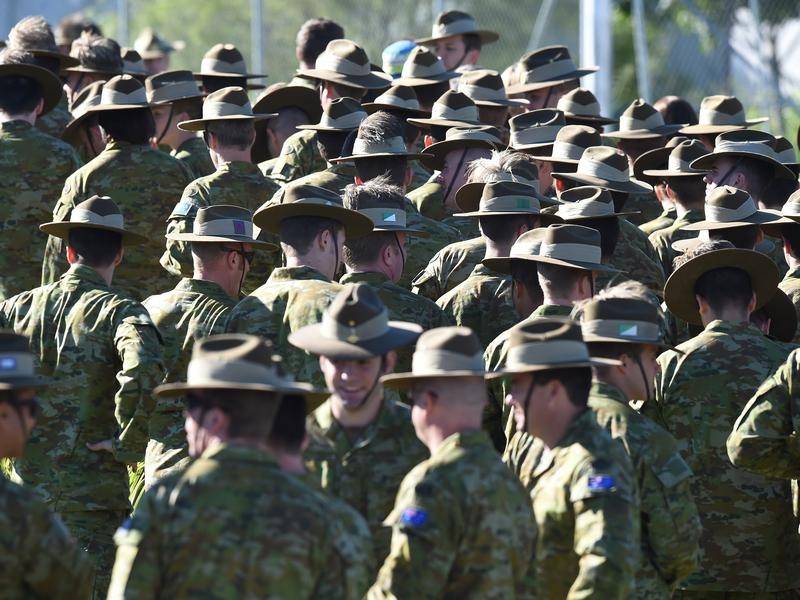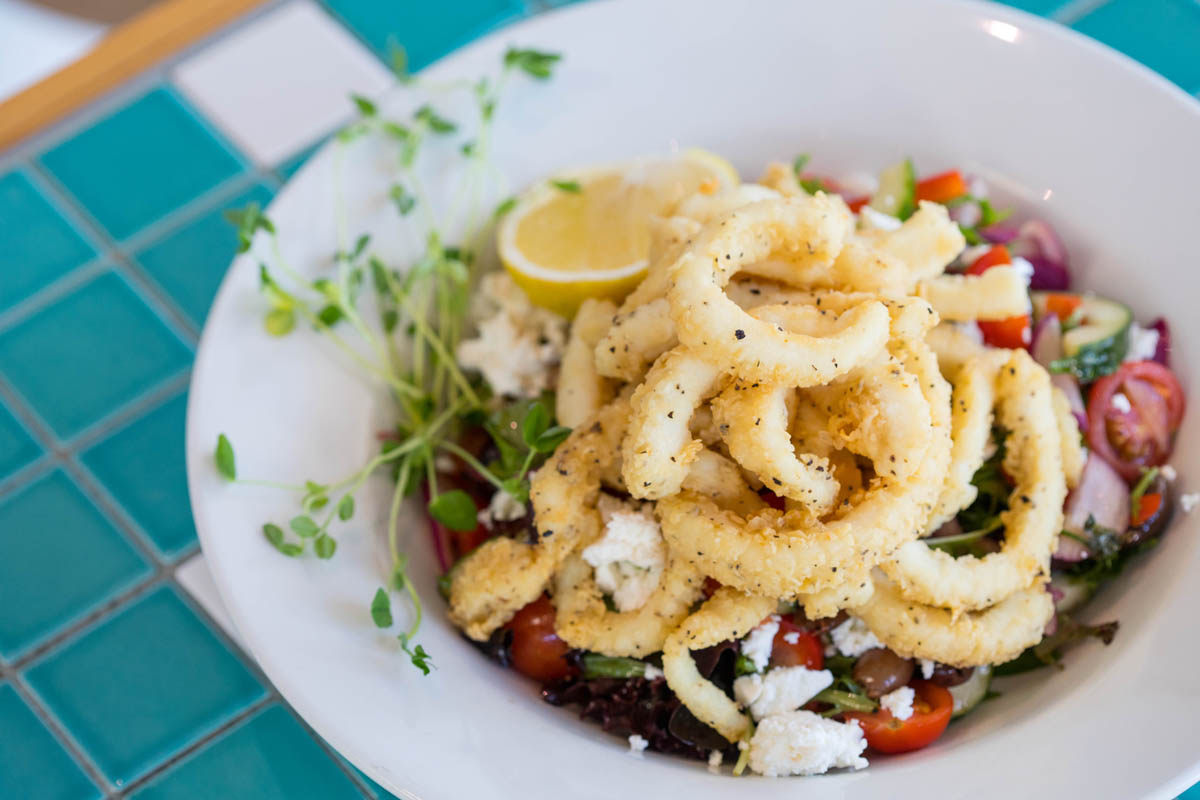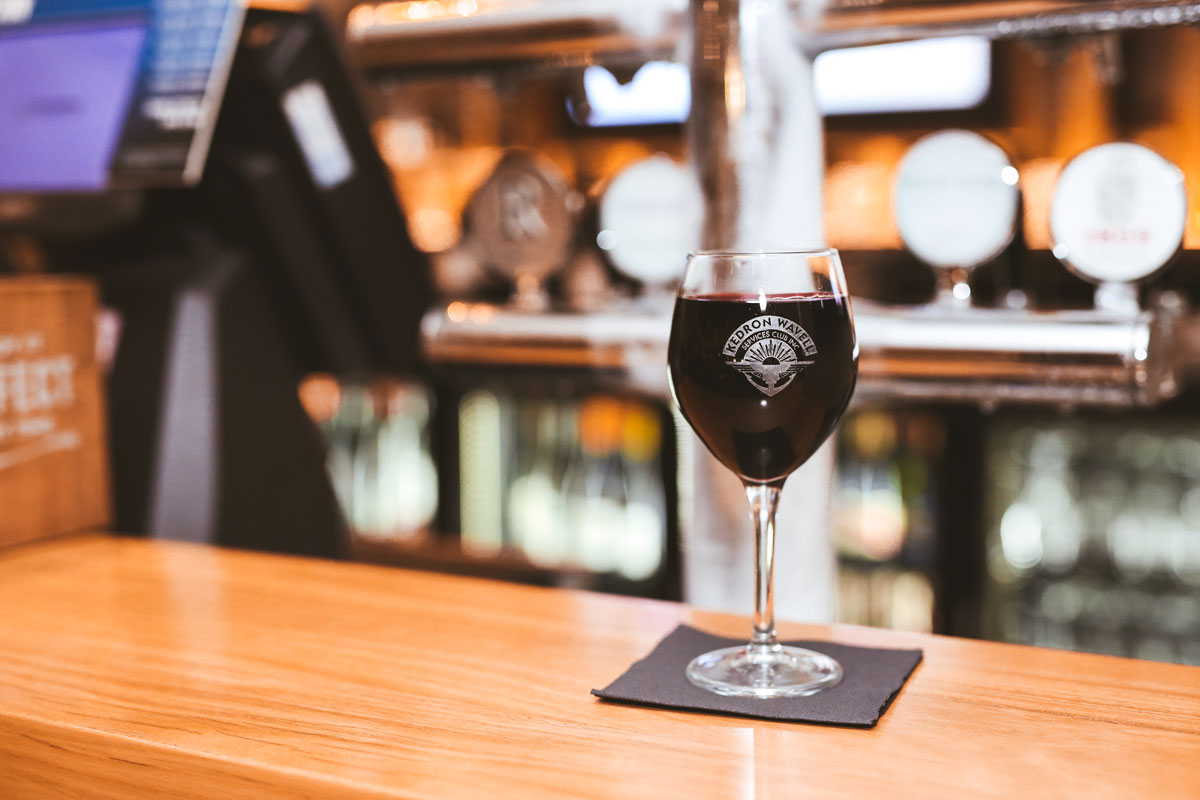 |
||
|
||
|
Privacy Policy | Editorial Policy | Profit Policy | Join the Association | List of Members | Contact us | Index | Links |
||
|
Back Go to page: 1 2 3 4 5 6 7 8 9 10 11 12 13 14 15 16 17 18 19 20 Forward |
||
|
Out in the shed with Ted. |
||
|
Contents.
Advertising Pension rates (March - Sept 2020) Veterans to be counted in the census What happens when the Queen dies.
|
||
 |
||
|
Welcome to Kedron-Wavell Services Club. Located in the vibrant Chermside precinct, only 15 minutes north of Brisbane’s CBD, the Club is Brisbane’s award winning, premier function, entertainment and leisure destination.
With a cosmopolitan atmosphere and elegant features, Kedron-Wavell Services Club is the perfect place to meet your family and friends… or meet new friends! We’re easy to find and offer free off-street parking for members and guests. |
||
|
|
||
|
20 March 2020 – 19 September 2020
|
||
|
|
||
|
Carers’ allowance, until 31 December, 2020, is $131.90 per fortnight. |
||
|
|
||
|
|
||
|
The Government will provide a one-off $750 payment to around 6.5 million social security, veteran and other income support recipients and eligible concession card holders. Around half of those that benefit are pensioners. This payment will help to support confidence and domestic demand in the economy. There will be one payment per eligible recipient. That is, if a person qualifies for the one-off payment in multiple ways, they will only receive one payment. The payment will be exempt from taxation and will not count as income for Social Security, Farm Household Allowance and Veteran payments.
Click HERE to find out more information.
|
||
|
RSL endorses Anzac dawn driveway service
A grassroots campaign for people to commemorate Anzac Day by standing in their driveways at dawn has been endorsed by every state and territory RSL branch.
With Anzac Day's once indestructible traditions cruelled by forced isolation, Australians will instead walk to the ends of their driveways on April 25 and light up the dawn. RSL branches in every state have unanimously endorsed the gesture, with families across the nation expected to stand at their gates, on balconies or verandas at 6am and hold a candle to fallen heroes.
Since regular public marches and services are cancelled due to the COVID-19 crisis, radio networks are signing on to livestream services people can tune in to outside on phones and tablets. Musicians everywhere are being called on to take to their front yards to play the Last Post and Rouse or Reveille for neighbours. Residents are being urged to dress windows and mailboxes with poppies and kids to make bright red "wreaths" from painted egg cartons to hang on doors.
What began as a grassroots idea to mark Australia's great day of remembrance has grown into a national campaign. "We get thousands and thousands of people to dawn services in a normal year and a very great proportion of those are from the general public," RSL Australia general manager Kim Henshaw said. "So this gives them a way that they can have their own private commemoration. We see it as very positive indeed."
He said it was decided at a national hook-up on Monday to tag the initiative Light Up The Dawn.
In Brisbane, school teacher Alastair Tomkins has launched Music for Mateship in a bid to "bring our community together one street at a time by playing the Last Post, observing a minute's silence and playing Rouse". Anyone interested should download the music sheets, start practising and notify their neighbourhood via a letterbox drop, he says. ABC Local Radio and some commercial networks have agreed to broadcast services from 6am.
West of the NSW Blue Mountains, at Bathurst, local stations 2BS and B-Rock are inviting residents to hold a candle in their driveways during a seven-minute broadcast. Community station 2MCE at the town's Charles Sturt University campus will stream the service to 100 other stations across the country. At Scone in the state's Hunter Valley, locals are being encouraged not to tie a yellow ribbon around the old oak tree but a purple one traditionally used in Anzac garlands on their fences and railings.
On Facebook and Twitter, dozens of community support groups and pages have asked tens of thousands of followers to register for "letterbox events".
Credit for the idea is being directed at Melbourne man Justin Wilbur, the son of a Vietnam veteran who says, "nothing is going to stop us from remembering" our Diggers. |
||
|
|
||
|
Recently I had the good fortune to visit Thailand and stay with an old mate, “Gomer” Haynes. Many years ago Gomer was a Radtech and worked on the Mirage at Butterworth and like a lot of people, got to love the tropical way of life so much, he decided to stay. He moved to Thailand, bought land and started to farm durians. Many of us who served in south-east Asia and in particular Penang, will remember the pungent smell of the durian.
Named in some regions as the "king of fruits", the durian, which looks a bit like the soursop, is distinctive for its large size, strong odour, and thorn-covered rind. The fruit can grow as large as 30 centimetres (12 in) long and 15 centimetres (6 in) in diameter and it typically weighs one to three kilograms (2 to 7 lb). Its shape ranges from oblong to round, the colour of its husk green to brown and its flesh pale yellow to red, depending on the species.
|
||
|
|
||
|
L-R: Ted “Brad Pitt” McEvoy, Robin “Gomer” Haynes, Pi Maleet, Eve Haynes (wife), Adt, Lloyd Douglas, Sandy Haynes (daughter).
The picture was taken on Pi Maleet’s farm -she is a renowned farmer of another famous tropical fruit – the mangosteen – see HERE.
Some people regard the durian as having a pleasantly sweet fragrance, whereas others find the aroma overpowering with an unpleasant odour. Some say it tastes like eating strawberries while standing in a sewer. The smell evokes reactions from deep appreciation to intense disgust and has been described variously as rotten onions, turpentine, and raw sewage. The persistence of its odour, which may linger for several days, has led to the fruit's banishment from certain hotels and public transportation in southeast Asia. By contrast, the nineteenth-century British naturalist Alfred Russel Wallace described its flesh as "a rich custard highly flavoured with almonds". The flesh can be consumed at various stages of ripeness and it is used to flavour a wide variety of savoury and sweet desserts in southeast Asian cuisines. The seeds can also be eaten when cooked.
I prefer to use the expression “Smells like hell but tastes like heaven”.
Gomer, with his lovely wife Eve, is now a Land Baron in Thailand and they own several durian farms in which they grow different species of the fruit especially the much-prized Musang King - the King of the “King Of Fruits”.
Gomer’s farm is ideally placed to service the insatiable and growing market in China. Their farms are situated close to the main road-transport route into southern China.
The world’s biggest emerging consumer market appears firmly in favour of the smell. China’s massive unmet demand for durian is the prime reason the Hong Kong consulting firm Plantations International predicts that the global market for raw durian will reach $25 billion by 2030 — up from $15 billion in 2016. (Los Angeles Times)
Recently a good friend of mine – Lloyd Douglas – and I visited Gomer for a “look-see” trip at his operation. Both of us were blown away by the extent of the Thai hospitality, the generosity of spirits and the sheer amount of tucker that one person can put away. Gomer’s daughter – the lovely Sandy certainly has “hollow legs”. As with many kids her age (I will not divulge the number), she would arise from her nightie-nights (and Gomer’s incessant snoring Z’zzzzz) late into the morning but then continue to graze during the day and late into the night. She’s a hoot..!!
One thing which disappointed me in regards my visit to Thailand, is that most locals (and all round-eyes) would not even try a taste of an important source of protein – namely deep fried silkworms and crickets – see pic. (Yum??)
|
||
|
|
||
|
The silkworms tasted “nutty” – similar to a witchetty grub – the crickets were crunchy and salty – a snack with a cold Thai beer.
“Gomer” invites any and all of his previous mates, creditors and previous girlfriends to visit him in Thailand. His farm is situated away from the flesh-pots and the tourist traps in an area called Lang Suan – see here. If you wish to see “the real Thailand” please get into contact with Gomer, you can let us know and we’ll pass on your email to him.
|
||
|
|
||
|
|
||
|
George Homer has written a book which conveys to the reader what life was like during the early day of the RAAF Apprentice Training Scheme. It's a wonderful book, full of humorous events and definitely worth a read.
See below, it's a large book with 210 pages and could take a few seconds to load.
|
||
|
Sizing your solar panel system.
By the end of October last year, more than 2.23 million private homes throughout Australia were pumping current into the electricity grid through the solar panels on their roofs. It’s estimated that all those roofs generated 14,000 MW of power (at 240V that’s an astonishing 58 million amps).
The size or capacity of a solar photovoltaic (PV) system is the maximum electricity output the system can deliver, but this isn't about the number of solar panels, it's about the overall capacity of the system. Your system might have 20 x 250W panels, or 25 x 200W panels; in either case it's a 5000W (5kW) system and that's the number that really matters.
You can't correctly size your solar PV system unless you know how much electricity your home uses. The easiest way to figure this out is to look at past electricity bills, which should tell you how much power you've used in the previous month or quarter. From this you can figure out the average daily usage. This is even easier if you have a smart meter installed; you should be able to see your daily usage either on the bill or by checking your account online. Your power consumption is measured and billed in kilowatt-hours (kWh).
|
||
|
|
||
|
A typical Australian home uses 15–20kWh per day. But households can vary considerably in their usage; a single-person home will typically use about 8–9kWh per day on average, while a household of five people with a pool could use 33kWh per day.
It's important to consider when you use electricity. Is your home generally empty during weekdays, with everyone at work or school, so that your main power consumption comes in the evening? If so, your solar panels might not be used most effectively, as it's better to use the generated power during the day (or use it to charge a storage battery) than export it to the grid. Also consider whether some days are more power-hungry that others; the weekend for instance, when everyone is at home. And do you use more power in summer (running air conditioners), or in winter (running heaters)?
Put all this together and you should have a good understanding of how much power you usually use each day, how much you use on peak days, and the times of day you use most power.
Now you know how much power you typically use and the times of day you use it. What capacity will your solar PV system need to cover your power usage?
First, we're assuming you'll have a grid-connected system. By far the most common type in Australia, these systems have solar panels and an inverter and are connected to the main electricity grid. The solar panels supply power during the day and the home generally uses the solar power first before resorting to electricity from the grid. The grid connection is used to supply power at night (assuming there's no storage battery connected) and at other times when the solar panels can't generate enough power, such as on low-sunlight days.
|
||
|
|
||
|
Solar PV systems are rated in watts (W) or kilowatts (kW). You'll see systems described as 4kW, 5kW, 10kW and so on. As a general rule, each solar panel, rated as 1 kW, will generate about 4kW each day, so you can expect a 5kW system to generate 20 kW in a good day. A “good” day is one which has plenty of sunshine but is not too hot. However, it's just a general rule; the actual amount of electricity generated per kW of solar panels depends on your location, the time of year and the amount of sunlight you're getting, the orientation of the panels, how old they are, and so on. In southern regions such as Hobart it could be as low as 3.5kWh per day, while the same 1kW of panels in Darwin could generate 5kWh.
Your minimum aim is to cover as much of your household consumption as reasonably possible for a typical day. If your power consumption is (say) 30kWh on some days, but on most days it's 20kWh, it might not be worth adding extra panels just to cover those few 30kWh days. A 5kW solar PV system might be the most cost-effective option and you'll just have to accept paying for more power than usual from the grid on those occasional high-consumption days. But solar panels are relatively cheap now, so it's worth talking this through with your installer to see if the sums make sense for a larger system. There's a real economy of scale in installing a larger system in the 5kW to 10kW range rather than a smaller system of 2kW to 3kW.
You might think it's better to oversize your system because any excess will be exported to the grid and you'll be paid for it via the feed-in tariff, but feed-in tariffs for new solar PV systems are generally very low – typically from seven to 12 cents per kWh – which is unlikely on its own to justify the cost of a larger system. The real benefit of a larger system is that it will be easier to add a battery, take full advantage of your inverter's capacity and simply to generate more power throughout the day so that you are less likely to need grid power.
Since you're looking at saving on power costs by installing solar, it makes sense to maximise your use of that solar power. So as much possible, your electricity consumption should happen during the day when the panels are generating. Likewise, minimise your power consumption at night. Night-time power is going to come from the grid – which is relatively expensive. Alternatively, night-time usage will come from your storage battery if you have one, and you won't want to drain that any faster than you need to. So consider running your dishwasher and washing machine during the daytime, using a timer or "delay start" function if they have one. Likewise, try to use air conditioners and heaters during daylight, and again consider using timer functions; this can reduce the amount you need to run them during the evening.
Online "solar calculators" can help you work out the size of solar system you need. And while not endorsing any in particular, they're worth a look. However, some solar calculators focus on aspects other than system sizing, such as payback times, cost of finance and so on; all potentially useful but it might not be the information you're looking for. Have a look HERE.
By far the most common type in Australia, grid connected systems have solar panels and an inverter and are connected to the main electricity grid while off-grid systems are completely standalone from the main grid. With the off-grid system, all the home's power comes from the solar panels and possibly some other types of power generation as well, such as wind. These systems almost always use storage batteries to capture unused power from the solar array, for use at night and on low-sunlight days. They often also have a diesel-powered generator for back-up in extended periods of low sunlight and when there's a sudden high demand for power (such as when a pump starts up).
Off-grid systems are usually more complex and expensive than grid-connected systems. They need more solar capacity than a typical grid-connected system and may also need inverters capable of higher loads to cope with peak demands. Homes that run off-grid need to be particularly energy-efficient and the load demand needs to be well-managed throughout the day. Off-grid systems generally only make sense for remote properties where a grid connection isn't available or would be prohibitively expensive to install. They should be designed and installed by a supplier with particular expertise in this type of system.
Most freestanding houses will have enough roof area to support a system however many panels the home needs. Factors that might reduce your available roof area include heavily shaded sections and roofs with unusual pitch. Solar panels are mounted on brackets to ensure correct angling and air circulation, so installers can usually find a way to make most roof spaces work well. It's usually best to have the panels facing north, to maximise the amount of sunlight that falls on them. But that's not always possible and it's not essential. North-east or north-west are often just as good. Your installer should be able to work out the best orientation for your panels given your location, roof space and household needs.
|
||
|
|
||
|
Sometimes a mix of east and west facing panels can work best; this may give a slightly lower amount of power generation in the middle of the day but will produce more in the morning and late afternoon compared to a north-facing array. If you tend to use more power at those times, this orientation might make more sense.
And don't despair if your only available roof space faces south – south-facing panels can still produce about 80% of their rated power, plus, if you already have north-facing panels, you can always expand your solar PV, or add a separate system, on the southerly aspect. Solar panels are cheap enough that this can make economic sense, but you may want to put on a few more panels in the south-facing array to make up for the reduced production.
The inverter is a key part of the solar PV system; it's the box on the
wall (or sometimes the roof) that takes the electricity generated by the
solar panels in direct current (DC) and converts it to alternating
current (AC) for your household circuits to use in powering your fridge,
TV, lights and so on. The inverter size must match the solar PV array's
size; basically, if you have 5kW of panels on the roof, you'll need a
5kW inverter as well. But note that the panels rarely if ever deliver
their maximum rated output, due to variable sunlight conditions, loss of
efficiency as the panels age, reduced efficiency i
An alternative to a single inverter unit is to have micro-inverters, where each panel has its own small inverter attached. These are usually more expensive, and have some technical pros and cons. (See HERE).
A storage battery will capture the unused solar power generated during the day, for use at night and on low-sunlight days. Installations that include batteries are increasingly popular, but for most homes, it’s thought a battery doesn't make economic sense - yet. Batteries are still relatively expensive and the payback time will often be longer than the warranty period of the battery. The good news is that battery prices are falling rapidly and in two or three years it will probably be the right decision to include a storage battery with any solar PV system.
The combination of solar and battery is unlikely to meet all your power needs throughout the year; on most days, especially in periods of low sunlight, you'll still need to draw some power from the grid. Even off-grid systems still usually rely on a diesel generator from time to time, and remember, for most grid-connected systems, having a battery doesn't necessarily protect you in the event of a blackout. You may still lose all power to your home, despite having solar panels producing power and a charged battery ready and waiting. This is because grid-connected systems have what's known as "anti-islanding protection". During a blackout, the grid and any engineers working on the lines must be protected from "islands" of electricity generation (such as your solar panels) pumping power unexpectedly into the lines. For most solar PV systems, the simplest way to provide anti-islanding protection is to shut down entirely, so, when it senses a grid blackout, your solar PV system shuts down and you have no household power at all.
Some sophisticated inverters can provide anti-islanding protection during a blackout and will keep the solar panels and battery operating so that the house has some power but expect to pay a fair bit more for such a system, as the hardware is more expensive and you may need more solar and battery capacity than you think to run the house for a few hours during a blackout. You might choose to allow only critical household circuits to operate in that situation, such as the fridge and lighting. That could mean extra wiring work is needed. Be sure to discuss this up front with your installer so they can design and quote the right type of system for you.
Click HERE for a storage battery buying guide and to see whether a battery makes sense for you.
It's not always easy to calculate exactly how much capacity you'll need for your solar panels, or how much you'll actually be able to fit on your roof, so you should talk to at least a couple of solar installers to get a detailed quote. A good installer will work with you to figure out your home's power usage and the right sort of solar system to suit both your power needs and the roof space you have available.
Watt (W) and kilowatt (kW): is a unit used to quantify the rate of energy transfer. One kilowatt = 1000 watts. With solar panels, the rating in watts specifies the maximum power the panel can deliver at any point in time. Watt-hours (Wh) and kilowatt-hours (kWh): a measure of energy production or consumption over time. The kilowatt-hour (kWh) is the unit you'll see on your electricity bill, because you're billed for your electricity usage over time. A solar panel producing 300W for one hour would deliver 300Wh (or 0.3kWh) of energy
|
||
|
A bloke wants a divorce. He tells the judge, “I just can’t take it anymore, every night she’s out until way after midnight, just going from bar to bar. Judge asks, “What’s she doing?” The bloke answers, “Looking for me.”
|
||
|
The Douglas AC-47 Spooky (also nicknamed "Puff, the Magic Dragon") was the first in a series of fixed wing gunships developed by the United States Air Force during the Vietnam War. It was designed to provide more firepower than light and medium ground-attack aircraft in certain situations when ground forces called for close air support.
Despite its service entry in 1941 and an American military career spanning across both World War 2 (1939-1945) and the Korean War (1950-1953), the Douglas C-47 “Skytrain” transport saw renewed life during the American involvement in the Vietnam War (1955-1975).
The AC-47 was an interim solution intended for Close-Air Support (CAS) for friendly ground forces and was capably armed with 3 x 7.62mm General Electric SUU-11A miniguns for the role.
53 x C-47 United States Air Force (USAF) transports were converted for the gunship role. The C-47 was itself the militarized form of the Douglas DC-3 airliner.
Fixed-wing gunships proved a viable CAS platform during the conflict where they could loiter on station and deliver relatively accurate fire onto enemy forces within close proximity of operating allies - this accomplished through a banking action with the guns trained downwards off portside. Fixed-wing strike jets offered a different sort of strike element for war-planners, one that was fast-moving and could carry mixed ordnance loads but lacked the low-level, low-speed flight characteristics offered by prop-driven types such as the AC-47. Use of gunships grew considerably as the Vietnam War raged and helicopter gunships further solidified the role of such aircraft in the U.S. Air Force inventory. The conversion of existing C-47 into make-shift gunship platforms marked the first time that the American military opted for this type of aircraft.
|
||
|
|
||
|
On the whole, the external arrangement of the C-47 was held intact. Internally, the three miniguns were installed with their mounting hardware and ammunition stocks along the portside, two at cabin windows and the third gun system at the cargo door. The guns held a rate-of-fire of 6,000 rounds-per-minute because of their rotating Gatling concept. Such a weapon burned through ammunition as quite a rate, so short bursts were typically used. A general ammunition load for sorties was about 16,500 x 7.62mm cartridges. While gunners were kept aboard to monitor the gun’s performance and make any necessary repairs, the weapons were controlled directly by the pilot through his control yoke. The guns could be fired in unison for maximum effect or individually as the situation warranted.
A typical crew numbered eight, including two pilots, a navigator, a flight engineer, a loadmaster, two gunners, and an observer (typically from the South Vietnamese military). While primarily outfitted with the GE miniguns, some early-batch forms were delivered with 8 to 10 x 0.30 calibre Browning machine guns due to minigun shortages. Still others were operated with only 2 x minigun mountings. The AC-47 also stocked 47 x Mk 24 series flares for illumination. Typical engagement altitudes ranged from 2,500 to 3,000 feet. A gun sight allowed for the needed accuracy when banking the aircraft.
Testing of AC-47 aircraft in the Vietnam theatre began in late 1964 and continued into early 1965 with success. The 4th Commando Squadron was then established in August 1965 to become its first formal operator. AC-47 gunships were pressed into service as convoy escorts/general strike and Forward Air Control (FAC) during daylight hours and as CAS platforms during low-light, night-time hours - including illumination of enemy positions. In the latter, flares were dropped manually from the rear cargo door after a signal was delivered from the pilot in the cockpit.
To ground troops, the aircraft became known as “Puff’ or “Puff the Magic Dragon” for its ferocious portside lethality on unprotected enemies. AC-47s were later passed on to the South Vietnamese Air Force during “Vietnamization” in the U.S. drawdown of combat actions in the region. Of note is that base C-47 transports arrived in the theatre earlier in February 1962 though, these were strictly used on illumination runs - these aircraft known as “flareships”.
Of the 53 AC-47s delivered, about 41 of this inventory saw combat service in the Vietnam War. Some twelve were lost to in combat while nineteen airframes were lost in all - proving the aircraft was not invulnerable to all manner of battlefield dangers. It was slow and poorly protected which made for disastrous results in some cases.
The AC-47, forgotten by many in today’s technology-laden world of military hardware, was a potent platform to the extreme, a life-saver to some and a life-taker to her enemies.
You can see video below
|
||
|
|
||
|
A man and a woman who had never met before, but who were both married to other people, found themselves assigned to the same sleeping room on a trans-continental train. Though initially embarrassed and uneasy over sharing a room, they were both very tired and fell asleep quickly, he in the upper berth and she in the lower. At 1:00 AM, the man leaned down and gently woke the woman saying, "Ma'am, I'm sorry to bother you, but would you be willing to reach into the closet to get me a second blanket? I'm awfully cold." "I have a better idea," she replied "Just for tonight, let's pretend that we're married." "Wow! That's a great idea!", he exclaimed. "Good", she replied "Get your own bloody blanket." After a moment of silence, he farted. |
||
|
|
||
|
Veterans to be counted on national census.
Veterans will be counted in the 2021 census to help the government shape policy that helps them. The 2021 census will ask whether people have served in the Australian Defence Force.
"The improved data will help inform our policy response to issues facing veterans, such as health, housing and employment," Veterans' Affairs Minister Darren Chester said recently.
Now wouldn’t you have thought that some organisation, such as the ADF or DVA or even the ATO would already know this information.
Surely this isn’t a case of “seeming to be doing something” – surely not!
|
||
|
If you replace "W" with "T" in "What, Where and When", you get the answer to each of them.
|
||
|
The Kedron Wavell Services Club’s classy restaurant, The Kitchen, features a modern cuisine menu and covered al fresco dining deck, creating the perfect atmosphere to catch up with friends for coffee or dinner, before catching a first class show or meeting over lunch or dinner with business colleagues.
|
||
|
|
||
| The Kitchen is open Monday to Saturday from 9.30am and Sundays from 8.30am. The Kitchen is an ideal place to spend a leisurely Sunday morning breakfast – click HERE to see the menu.
|
||
|
I don’t like making plans for the day because then the word “premeditated” gets thrown around in the courtroom |
||
|
|
||
|
Digest of the 'DVA/KPMG Report, 'Review of TPI Benefits' by Disabled Veterans of Australia Network:
The Veterans’ Entitlements Act 1986 (‘VEA’) was developed in order to consolidate the majority of separate repatriation legislation into a single Act. The VEA provides a range of benefits to Veterans, including an income stream for life for totally and permanently incapacitated (“TPI”) Veterans. Despite various changes to the administration of the TPI benefit’ since its initial inception in 1920, the view of the Australian Federation of Totally and Permanently Incapacitated Ex-Servicemen and Women Ltd (“the Federation”) and the Disabled Veterans of Australia Network’s (“DVANetwork”) is that the value of the TPI benefit has eroded over time and is not currently sufficient to meet the needs of its recipients.
KPMG agree with the Disabled Veterans of Australia Network proposal that the earnings of the spouse of our TPI disabled veterans should not be means tested against the Service Pension as this pension like the TPI rate is compensation for 'suffering loss of earnings' not welfare. Further KPMG states that such means testing is inconsistent with the norms of community workplace compensation for disability.
It is therefore now acknowledged that when a TPI Veteran is partnered and that partner has earnings, the financial cost of the Disabled Veterans is transferred from the Commonwealth to the partner and thus the family, as means testing removes 40 per cent of the compensation. DVA have been aware of this burden placed on the Disabled Veterans family under the VEA 1986 and have done nothing to rectify the injustice. Now this KPMG review has exposed the deliberate impoverishment of the families of our married TPIs families at the hands of DVA. This DVA policy of impoverishment has caused family breakdown, child neglect, depression, alcoholism and compromised mental health contributing to the suicide rate among veterans. See pages 24. and 57 of the report ....
There is much to digest in this report that requires close reading which if you take out the Swiss KPMG company logo is mostly straight out of the DVA media policy that they care for our nation's veterans. But this is to be expected as the KPMG's disclaimer states they take no responsibility for the accuracy of information or figures given to them by the Department.
You can read the full KPMG report HERE.
|
||
|
Anyway – I think THIS is funny.
And – I think THIS is funny too.
|
||
|
If a poison’s use by date expires, is it more poisonous or is it no longer poisonous? |
||
|
|
||
|
The Gallipoli Bar at the Kedron Wavell Services Club has something for everyone. Catch all your favourite sports action live in the new sports lounge. Have a punt in the TAB area. |
||
|
|
||
|
Check out the FREE live and local music acts. From 9pm every Friday and Saturday night, the Gallipoli Bar has free live music acts to entertain you while you enjoy a drink and relax in one of our many seating areas.
Trivia Thursdays. From 7pm in the Gallipoli Bar, grab a group of friends and test your wits in their free trivia challenge. Lots of great prizes to be won! First prize is a MASSIVE $100 Kedron-Wavell Kash. Second prize is $50 Kash plus plenty more giveaways throughout the night
Super Saturdays. Free Party Pies from 4.30pm, 12 large TV’s covering ALL the live sporting action.
Great food too, enjoy a platter to share (or just for yourself!). See the Menu.
|
||
|
For some years people have campaigned for a change in the criteria of length of service in country for the award of the Republic of Vietnam Campaign Medal, a foreign award. The criteria set by the then Government of the Republic of Vietnam is six months service in country unless KIA, RTA as a result of injuries while on operations, (including mental health issues due to operations), or being a POW and subsequently released. Note that RTA of a service person in less than 181 days for injuries or mental health issues not caused by operations does not meet the criteria.
In 2013 an Inquiry was held by the Defence Honours and Awards Tribunal (DHAAT) into the above matter as a result of requests for change, especially change to the period of service, ie a reduction of the 181 days to a lower period. At the time the policy of the VVAA was to oppose such a change and a submission was made to the DHAAT on that basis. The outcome of the inquiry was that the Tribunal found that the Australian government had no legal power to change the time criteria set by the government of the Republic of Vietnam.
As a result of further claims a second DHAAT inquiry was held in 2015 with a focus on a reduction of the 181 day period and its conditions. Amongst other matters some submissions queried the decision by the Government to set 181 days as the period, rather than six months as set by the Vietnamese Government – suggestions as low as two months were made. The period of 181 days and other criteria were upheld and the Tribunal again noted, on legal advice, that the Australian Government had no legal power to alter the criteria set by the Vietnamese Government.
The Defence Honours and Awards web site specifically notes that, for this foreign award, there have been two DHAAT inquiries into this matter and their outcomes. The web site also notes that the Australian government has “no intention for a further review”.
What was not addressed was that there were members of the permanent forces whose tours of duty were cut short of 181 days, eg, due to the withdrawal of Australian forces from the Republic of Vietnam, however, the position of the Australian Government is quite clear.
|
||
|
Do twins ever realise that one of them is unplanned? |
||
|
|
||
|
The Vietnam War has been done and dusted now for nearly 50 years but still they’re talking about it, about who won, who started it, what it was about and why we had it.
Bruce Herschensohn, a senior fellow at the Prager University has his ideas and you can see them below.
|
||
|
|
||
|
|
||
| My shoelace broke today, most people would blame Donald Trump but I know it’s actually because of climate change.
|
||
|
Two guys grow up together, but after uni one moves to Brisbane and the other to Sydney. They agree to meet every ten years on the Gold Coast to play golf and catch up with each other. At age 32 they meet, finish their round of golf and head for lunch. "Where you wanna go?" "Hooters." "Why Hooters?" "They have those girls with the big boobs, tight shorts and the gorgeous legs." "You're on."
At age 42, they meet and play golf again. "Where you wanna go for lunch?" "Hooters." "Again? Why?" "They have cold beer, big screen TVs, and side action on the games." "OK."
At age 52 thy meet and play again. "So where you wanna go for lunch?" "Hooters. "Why?" "The food is pretty good and there's plenty of parking." "OK."
At age 62 they meet again. After a round of golf, one says, "Where you wanna go?" "Hooters." "Why?" "Wings are half price and the food isn't too spicy." "Good choice"
At age 72 they meet again. Once again, after a round of golf, one says, "Where shall we go for lunch?" "Hooters. "Why?" "They have six handicapped parking spaces right by the door and they have senior discounts." "Great choice."
At age 82 they meet and play again. "Where should we go for lunch?" "Hooters." "Why?" "Because we've never been there before." |
||
|
|
||
|
What happens when the Queen dies?
One day it is inevitable, like all of us lesser folk, the Queen will, one day, also meet her maker. Since ascending to the throne in 1952, the mother-of-four has worked as mechanic and military truck driver during World War II, talked politics with 13 prime ministers and 13 US presidents, led 53 Commonwealth countries and welcomed eight grandchildren and eight great-grandchildren.
However, when Prince Philip announced his retirement in May 2017 at the age of 96 with the full support of the Queen, it served as a poignant reminder that the famous couple will not be able, or wish, to undertake public duties forever.
With the knowledge that Queen Elizabeth II's reign will come to an end at some point, here is everything you need to know about what will happen when she passes.
Click the pic below
|
||
|
|
||
|
And for your edification:
The "West Australian" Sat 14 March 2020.
|
||
|
|
||
|
|
||
|
|
||
|
|
||
|
Back Go to page: 1 2 3 4 5 6 7 8 9 10 11 12 13 14 15 16 17 18 19 20 Forward |
||
|
|

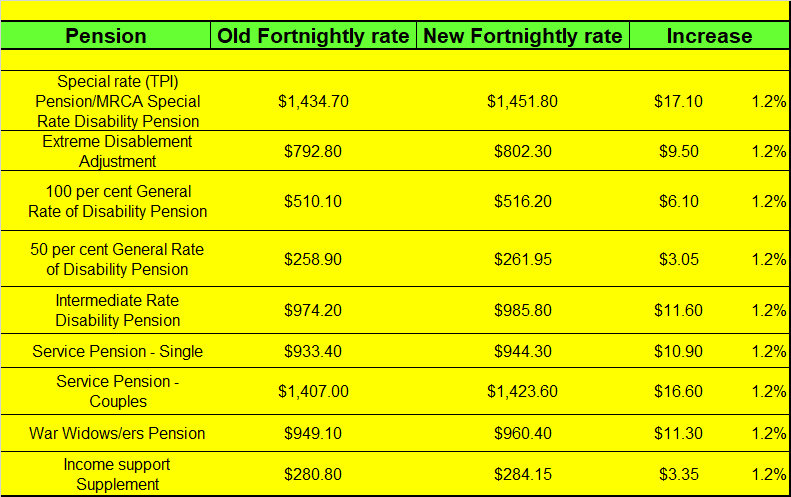





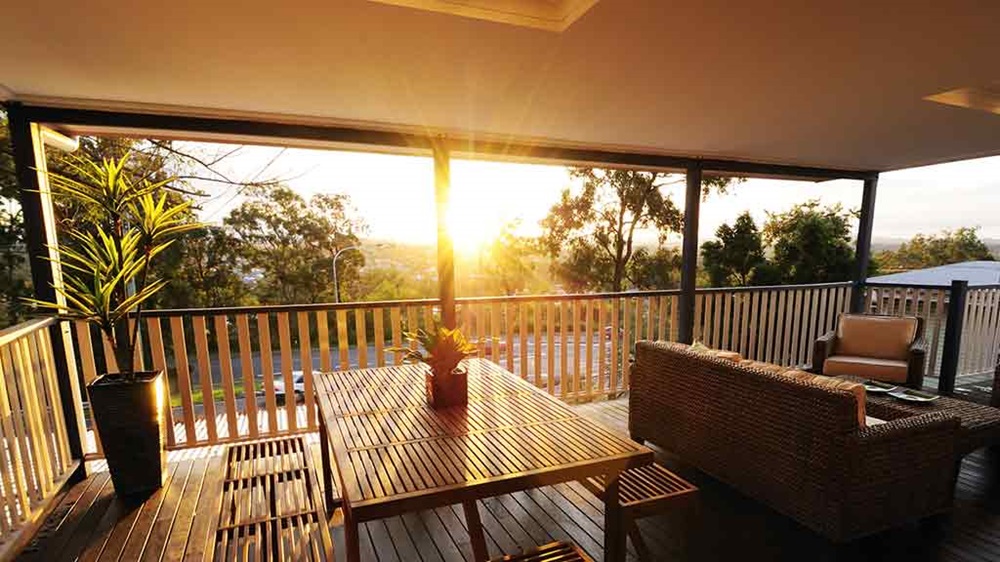

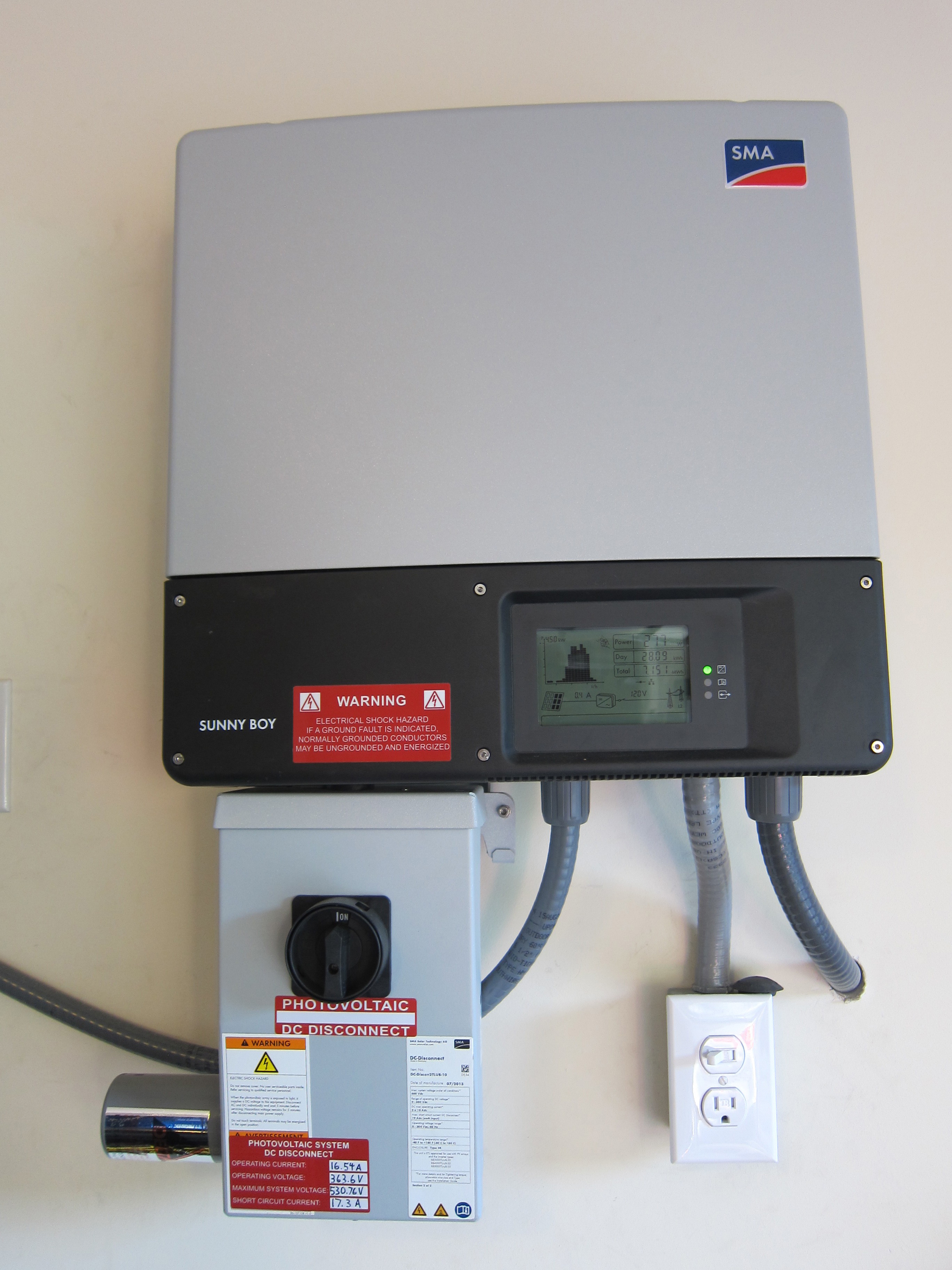
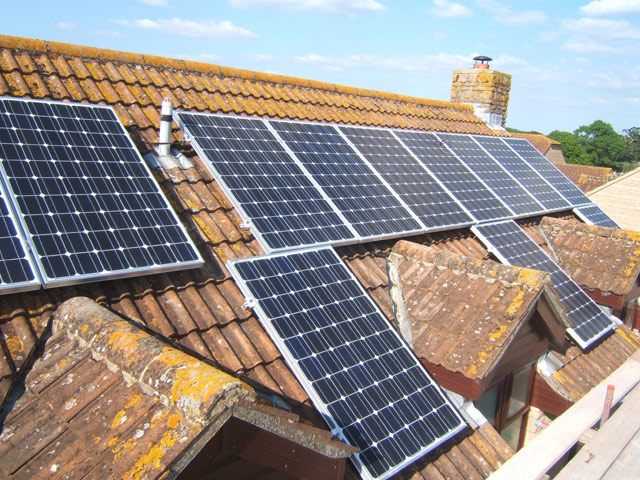
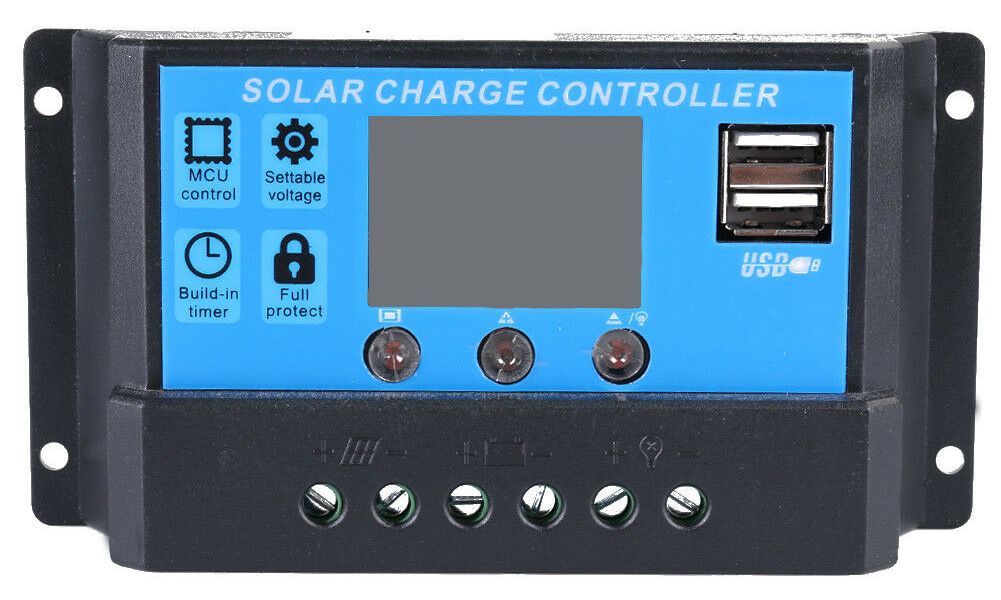 n
extreme heat and so on, so you can actually get away with a smaller
capacity inverter compared to the solar PV array (this is sometimes
referred to as oversizing the array or overclocking the inverter).
n
extreme heat and so on, so you can actually get away with a smaller
capacity inverter compared to the solar PV array (this is sometimes
referred to as oversizing the array or overclocking the inverter). 
